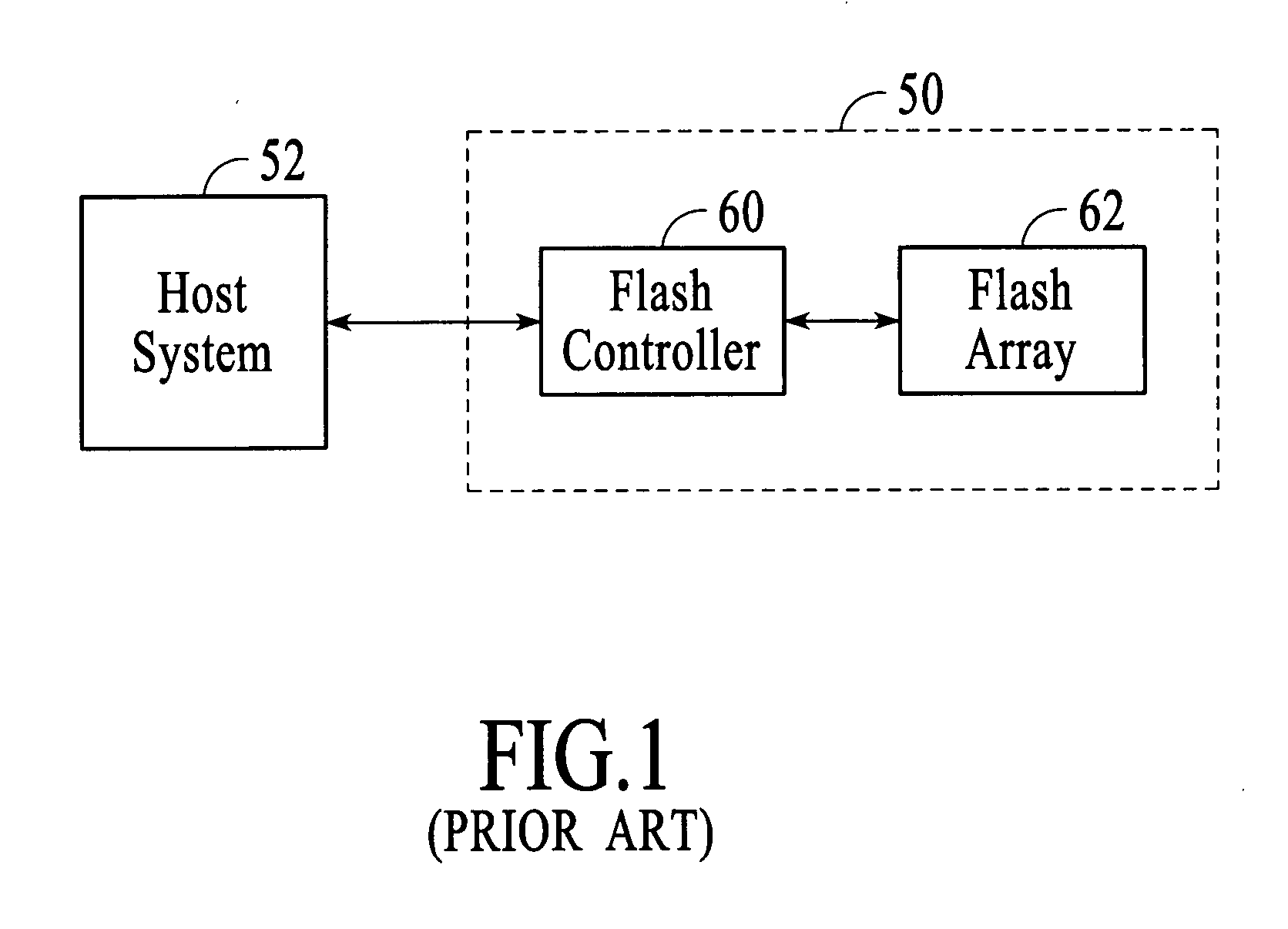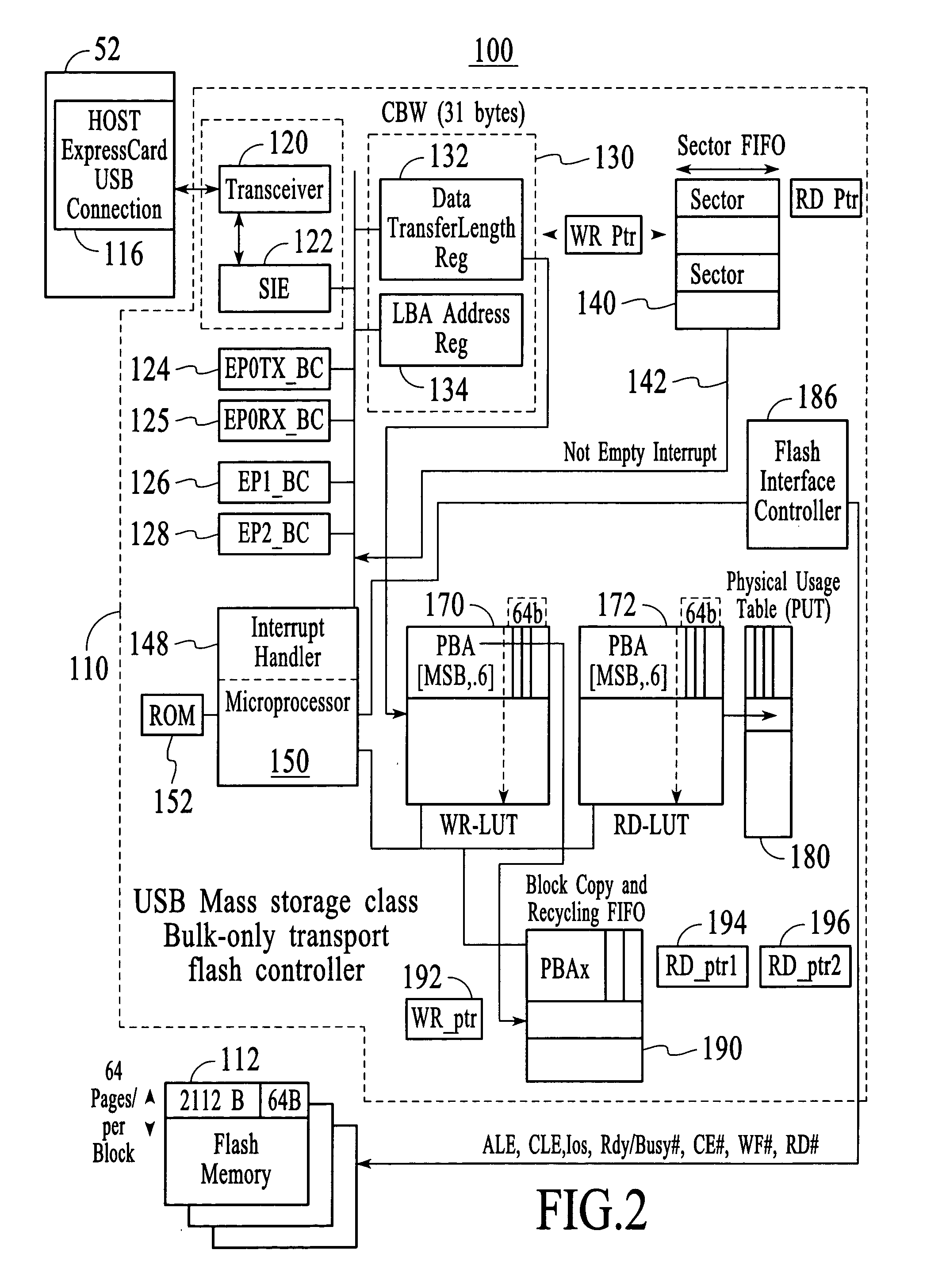System and method for controlling flash memory
a technology of flash memory and control system, applied in the field of memory systems, can solve the problems of limited life span of flash memory sectors, inability to control flash memory, and inability to control flash memory, and achieve the effect of significantly increasing the speed at which data is written to and read from flash memory
- Summary
- Abstract
- Description
- Claims
- Application Information
AI Technical Summary
Benefits of technology
Problems solved by technology
Method used
Image
Examples
Embodiment Construction
Definitions
[0030] The following terms are defined in accordance with the present invention.
[0031] Block: A basic memory erase unit. Each block contains numerous sectors, e.g., 16, 32, 64, etc. If any sector encounters write error, the whole block is declared a bad block and all valid sectors within the block are relocated to another block.
[0032] Sector: A sub-unit of a block. Each sector typically has two fields—a data field and a spare field.
[0033] Obsolete sector: A sector that is programmed with data but the data has been subsequently updated. When the data is updated, the obsolete data remains in the obsolete sector and the updated data is written to new sectors, which become valid sectors.
[0034] Non-valid blocks: Blocks that contain obsolete or redundant sectors.
[0035] Valid sector: A sector that has been programmed with data and the data is current, i.e., not obsolete.
[0036] Wear leveling: A method for evenly distributing the number times each block of flash memory is ...
PUM
 Login to View More
Login to View More Abstract
Description
Claims
Application Information
 Login to View More
Login to View More - R&D
- Intellectual Property
- Life Sciences
- Materials
- Tech Scout
- Unparalleled Data Quality
- Higher Quality Content
- 60% Fewer Hallucinations
Browse by: Latest US Patents, China's latest patents, Technical Efficacy Thesaurus, Application Domain, Technology Topic, Popular Technical Reports.
© 2025 PatSnap. All rights reserved.Legal|Privacy policy|Modern Slavery Act Transparency Statement|Sitemap|About US| Contact US: help@patsnap.com



